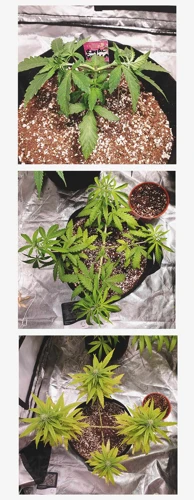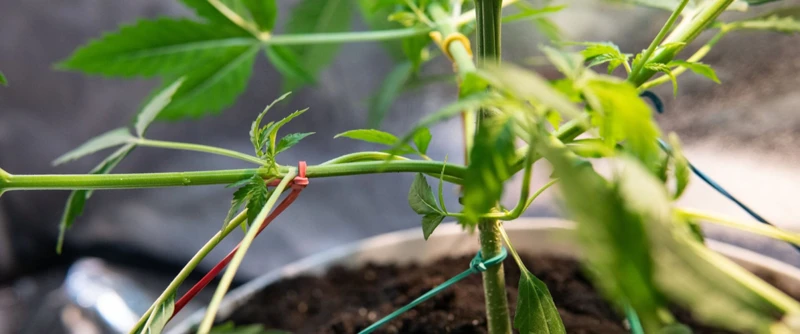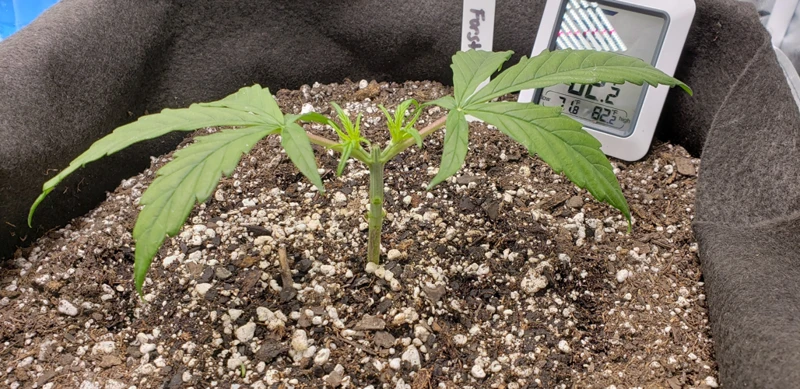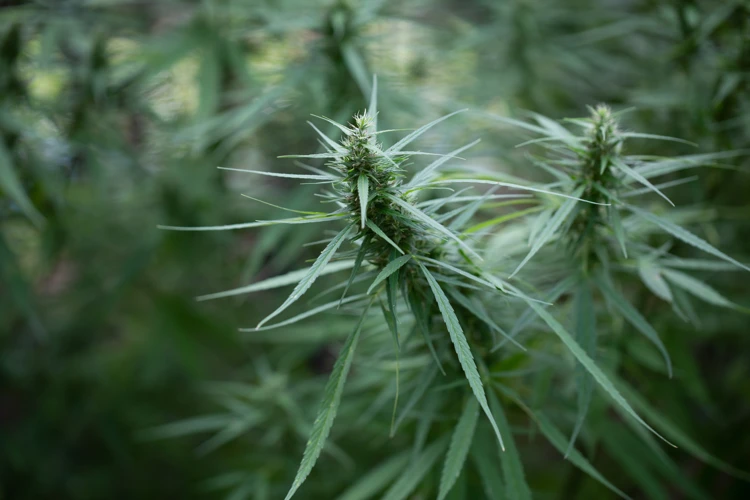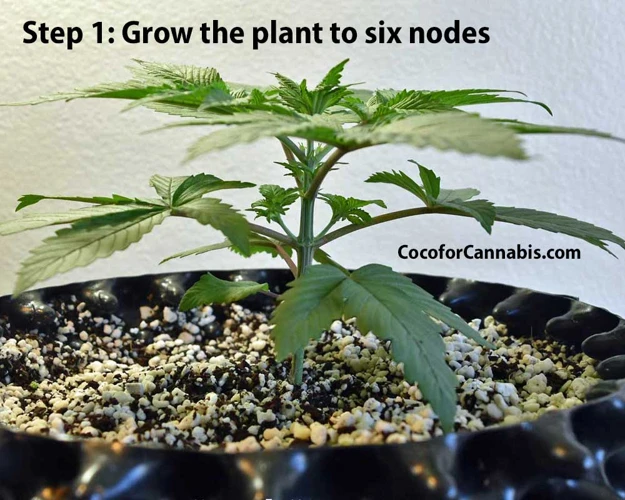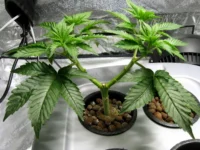
Tips for Successful Mainlining
As cannabis cultivation continues to evolve, so do the various techniques used to maximize yields and enhance plant health. One such technique that has gained popularity among growers is mainlining. But what exactly is mainlining, and how can it be successfully executed? In this article, we’ll explore the dos and don’ts of mainlining, including when to execute this technique, common mistakes to avoid, and how to determine success. So, whether you’re a novice or seasoned grower, read on to learn more about this intriguing cultivation method.
What is Mainlining?
Contents
If you’re new to cannabis growing, you may have come across the term “mainlining” and wondered what it means. Essentially, mainlining is a specific technique used to train cannabis plants to grow in a particular way in order to maximize yields. The process can seem complicated and daunting to those unfamiliar with it, but with a bit of practice and patience, the results can be very rewarding. Let’s take a closer look at how mainlining works and what you need to know to do it successfully.
How Does it Work?
Mainlining is a cannabis plant training technique that involves creating an even canopy of buds that all receive equal amounts of light. This results in a more efficient use of space and resources, as well as an overall increase in yield.
How does mainlining work?
1. Start with a young plant – preferably 1-2 weeks old.
2. Top the plant – this involves cutting off the top of the plant, leaving just two main branches.
3. Tie down the two branches – gently pull the branches to the side and tie them down to the pot. This will encourage horizontal growth and the development of strong lateral branches.
4. Repeat the topping and tying down process – once the lateral branches have grown to a certain length, repeat the topping process, leaving four main branches. Then, gently tie down the four branches in a symmetrical pattern to encourage even growth.
5. Continue this process – repeat the topping and tying down process until you have the desired number of evenly spaced main branches.
This process may seem intimidating at first, but with practice, it can become a simple and effective way to increase your yield. The key is to be patient and consistent with your pruning and training techniques.
Pros and Cons
Mainlining is a popular technique in the world of cannabis cultivation that involves manipulating the structure of a plant by topping and training it to produce multiple colas or main stems. While it is a method that has proven to be successful for many growers, it comes with its own set of advantages and disadvantages.
Pros of Mainlining:
- Increased yield: Mainlining can significantly improve the overall yield of a plant by training it to grow multiple colas instead of just one or two.
- Better light distribution: With mainlining, the plant is trained to grow evenly, allowing for better light distribution and increased photosynthesis.
- Improved canopy management: The technique helps to create a flat canopy with multiple main stems, making it easier for growers to manage the plant and access each bud site for pruning and harvesting.
- Uniformity: The mainlining method produces a more uniform plant with similar sized colas, making for a more visually-appealing and higher quality yield.
Cons of Mainlining:
- Time-consuming: Mainlining can be more time-consuming than growing a plant naturally, as it requires more attention and patience to properly train the plant and prune it regularly.
- Nutrient demands: With multiple colas, plant requires more nutrients to support its overall growth and bud production, which could become expensive or require more careful attention to the plant’s nutritional needs.
- Pruning sensitivity: Mainlining requires a lot of pruning to create the desired structure, and some plants may be more sensitive to this than others.
- Lower stress tolerance: For some strains, mainlining can create more stress on the plant, leading to a more difficult grow and lower overall yield if not done correctly.
Despite these pros and cons, mainlining is a valuable technique for those seeking to produce a higher quality, more uniform yield. With the right strain, tools, and patience, growers can use the mainlining technique to create a more manageable, higher-yielding plant.
Dos of Mainlining
If you’re considering mainlining for your cannabis plants, there are certain dos that can help ensure success. These tips are important to follow if you want to achieve maximum yield and enhance bud quality. To give your plants the best start, follow these essential guidelines.
Choose the Right Strain
One of the most essential aspects of successful mainlining is selecting the right strain. Not all cannabis strains are created equal when it comes to mainlining, so it’s essential to do some research before you start.
To choose the right strain, you should consider several factors: the plant’s growth patterns, the shape of its leaves, and how sturdy its branches are. To make the selection process easier, we’ve compiled a table of some of the best strains for mainlining:
| Strain | Growth Pattern | Leaf Shape | Branch Sturdiness |
|---|---|---|---|
| Gorilla Glue #4 | Bushy, compact, and stout | Broad | Strong, thick branches |
| Green Crack | Tall and thin | Thin and elongated | Flexible branches |
| Girl Scout Cookies | Short and bushy | Broad | Sturdy branches |
| Trainwreck | Tall and bushy | Broad | Thick, sturdy branches |
| Blue Dream | Tall and bushy | Wide | Strong branches |
Remember, these strains are just examples, and there are many more out there that could work for mainlining. The goal is to find a strain that responds well to the mainlining process and has a strong structure that can support multiple colas. By doing some research and selecting the right strain, you’ll set yourself up for a successful mainlining experience.
Start Early
Starting early is crucial for successful mainlining. It is important to begin the process as soon as possible to allow your plants enough time to fully recover and maximize their growth potential. Here are some tips on how to start early:
- Start during the vegetative stage: The best time to start mainlining is during the vegetative stage, when your plants are still actively growing and developing. This allows them to recover quickly and ultimately produce better results.
- Begin with healthy plants: It is important to start with strong and healthy plants to ensure they can handle the stress of mainlining. Starting with weak or sickly plants can result in stunted growth and poor yields.
- Choose the Right Branches: When choosing branches to work with, look for strong and healthy ones that will be able to handle the pruning and training process. Weak or damaged branches should be avoided as they may not recover as well.
- Prune Strategically: When pruning, be strategic and aim to create an even canopy with four to eight main colas. It is important to avoid over pruning as this can cause undue stress and lead to stunted growth.
Starting early and following these tips will give your plants the best chance of success when mainlining. Keep in mind that patience and consistency are key factors in achieving excellent results.
Use the Right Tools
To successfully mainline your cannabis plant, it’s important to have the right tools at your disposal. Here are the essential tools you’ll need:
- Pruning shears: High-quality pruning shears will make precise cuts while minimizing damage to the plant. Look for a pair with sharp blades and comfortable handles.
- Trellis netting: Mainlining requires a support system to keep the plant’s many colas in place. A trellis netting is a great option because it’s easy to install and won’t damage the plant.
- Grow tent: While not an absolute necessity, a grow tent provides a controlled environment for your plant to thrive. It also makes it easier to manage temperature, humidity, and light levels.
- pH testing kit: Maintaining the right pH level is crucial to your plant’s health. Invest in a pH testing kit to ensure your water and nutrient solution are at the optimal levels.
- Nutrient measuring devices: Overfertilizing can be a common mistake when mainlining. To avoid this, use measuring cups or a digital scale to precisely measure out your nutrients.
Using the right tools is essential to the success of your mainlining process. Don’t cut corners when it comes to investing in quality tools – they’ll pay off in the long run with a healthier and higher yielding plant.
Stay Patient and Consistent
One essential aspect of successful mainlining is the need for patience and consistency throughout the process. This technique requires a significant level of time investment and attention to detail from the grower. To maintain consistent results, patience and attention to detail are a must.
To achieve the desired results, a grower must diligently follow the mainlining process without deviation. It is important to note that the desired results may take several weeks or months to achieve, which is where patience comes in. Rushing the process can lead to mistakes or a subpar yield.
Consistent care of the mainlined plant also helps it to grow evenly and develop a robust structure. Regular pruning, watering, and nutrient application are essential for consistent growth. Using an html table, we can see some specific ways to incorporate patience and consistency into the mainlining process:
| Patience | Consistency |
|---|---|
| Allow the plant to recover fully after each pruning session | Prune consistently, removing the same number of nodes from each side of the plant |
| Avoid overwatering or overfeeding, which can damage the plant | Feed and water the plant on a regular schedule and in consistent amounts |
| Be patient and don’t rush the plant’s growth process | Follow the mainlining process methodically and avoid deviation |
By incorporating both patience and consistency into the mainlining process, growers can achieve optimal results with their plants.
Don’ts of Mainlining
When it comes to mainlining, it’s important to not only focus on what you should be doing, but also on what you should avoid. While there are plenty of successful mainlining techniques out there, there are also a few common mistakes that can set growers back. In this section, we’ll take a closer look at some of the major “don’ts” of mainlining and how you can avoid them to achieve the best results possible for your plants. From pruning missteps to nutrient imbalances, these tips will help you steer clear of some of the most common pitfalls of the mainlining process.
Don’t Overprune
When it comes to mainlining, pruning is an important part of the process, but it’s easy to go overboard. Here are some tips on what not to do when it comes to pruning:
| Mistake | Perplexity Explanation |
|---|---|
| Pruning too much at once | It’s important to remember that the plant needs time to recover after each pruning session. If you remove too many nodes at once, it can slow down growth and even cause the plant to die. |
| Removing too many leaves | While it’s important to remove some leaves to enhance light penetration, removing too many can be detrimental. Leaves are the primary source of the plant’s energy production, so removing them excessively can lead to a decrease in overall health. |
| Pruning at the wrong time | Timing is crucial when it comes to pruning. Pruning too early can stunt growth, and pruning too late can cause the plant to become too bushy and difficult to manage. |
Remember, less is sometimes more when it comes to pruning during the mainlining process. Be patient and take your time to ensure you don’t accidentally harm your plants.
Don’t Underestimate Nutrient Needs
Successful mainlining requires a considerable amount of planning, dedication, and patience. One of the most critical factors in achieving good results is properly nourishing your plants with the right nutrients. Neglecting this aspect of cultivation could cause stunted growth, disease, and a lackluster yield.
Here are some common nutrient-related mistakes you need to avoid to ensure successful mainlining:
- Not understanding your plant’s nutrient requirements: Every strain has unique nutrient requirements. Ensure that you understand your plant’s specific needs, so you can provide it with the right nutrients at the right time.
- Over-fertilization: Providing too much fertilizer can be just as harmful as providing too little. Over-fertilizing can lead to nutrient burn, a condition where the plant absorbs excess nutrients, leading to root and leaf damage.
- Not monitoring pH levels: Maintaining the correct pH is critical for nutrient uptake in plants. Check the pH of your soil frequently and make any necessary adjustments to prevent nutrient deficiencies from developing.
- Ignoring micronutrients and trace elements: Many experienced growers focus only on nitrogen, phosphorus, and potassium (NPK) when fertilizing, neglecting the importance of micronutrients and trace elements. However, these play a crucial role in plant growth and health. Always make sure that you’re providing a balanced nutrient profile that includes all essential elements and micronutrients.
Understanding nutrient requirements and maintaining a healthy balance of nutrients is crucial for successful mainlining. Don’t overlook this important aspect of cultivation if you want to achieve optimal yields of high-quality cannabis.
Don’t Neglect the Basics
Successful mainlining requires attention to detail, and it’s important not to overlook the basics. These are the fundamental aspects of growing cannabis that apply to all methods, including mainlining.
Watering: One of the most critical basics to get right is watering. Overwatering can lead to root rot, while under watering can stunt plant growth. Make sure to water your plant based on its needs and the environment it’s in.
Lighting: Mainlining will require a good amount of light, so make sure your plant is getting enough. Using a high-quality grow light and keeping it at the right distance from the plant is important.
Nutrition: Your plant will need a balance of nutrients to grow properly. Use a nutrient schedule and follow it carefully to avoid over or underfeeding.
Temperature and Humidity: Cannabis plants thrive in specific temperature and humidity ranges. Keep an eye on the environment and make adjustments as needed to keep your plant healthy.
Air Circulation: Proper air circulation is important for preventing mold and other issues. Make sure to keep your plant in a well-ventilated area.
Pest Management: Pests can quickly damage your plant, so be proactive in managing them. Regularly inspect your plant for signs of pests and use appropriate methods to eliminate them.
By paying attention to these basics, you’ll ensure that your mainlining process is built on a solid foundation. It will also help you diagnose any problems that arise during the growth process, ensuring that you have a healthy and productive plant.
Common Mistakes to Avoid
As with any growing technique, there are a multitude of mistakes that can be made when attempting mainlining. While it may seem straightforward on the surface, there are many nuances to the process that can trip up even experienced growers. It’s important to be aware of these common mistakes and actively work to avoid them. Let’s take a closer look at some of the most frequent pitfalls and how to steer clear of them.
Overfertilizing
One common mistake that many growers make when mainlining is overfertilizing their plants. While it may seem like a good idea to give your plants as many nutrients as possible to encourage growth, too much fertilizer can actually harm your plants and reduce your yields.
What is overfertilizing?
Overfertilizing occurs when you give your plants too much fertilizer, whether it be in the form of nutrients, minerals, or other supplements. In some cases, overfertilization can lead to a buildup of salts in the soil, which can actually prevent your plants from absorbing the nutrients they need to grow.
Why is overfertilizing harmful?
Overfertilizing can cause a number of problems for your plants, including:
– **Root burn**: Overly strong concentrations of nutrients can burn your plants’ roots, leading to stunted growth and reduced yields.
– **Stress**: Too much fertilizer can cause your plants to become stressed and more susceptible to disease and pests.
– **Nutrient lockout**: When there is too much fertilizer in the soil, it can actually prevent your plants from absorbing the nutrients they need, leading to deficiencies.
How can you avoid overfertilizing?
One way to avoid overfertilizing your plants is to start with a low concentration of nutrients and gradually increase it over time. You should also test your soil regularly to ensure that it is not becoming too acidic or alkaline, which can affect nutrient absorption.
Another way to avoid overfertilizing is to follow the manufacturer’s instructions carefully and to use the right type of fertilizer for your plants. For example, different strains may have different nutrient requirements, so you’ll need to choose a fertilizer that is appropriate for your specific strain.
Table: Tips to avoid overfertilizing your plants
| Tip | Description |
|---|---|
| Start with low concentrations | Begin with a low-strength nutrient solution and gradually increase it over time. |
| Test your soil | Regularly test your soil to ensure that it is not becoming too acidic or alkaline, which can affect nutrient absorption. |
| Follow manufacturer’s instructions | Read and follow the instructions on the fertilizer packaging carefully, and choose a fertilizer that is appropriate for your specific strain. |
By avoiding overfertilizing and being careful with your nutrient management, you can help ensure that your plants stay healthy and productive throughout the mainlining process.
Underestimating Pruning Needs
One of the biggest mistakes that novice mainliners make is underestimating the importance of pruning. Pruning is an essential part of the mainlining process, as it allows the grower to create a more symmetrical and effective structure for the plant. When done correctly, it can also improve the yield and potency of the final harvest.
To avoid underestimating pruning needs, it is important to have a plan in place before beginning the mainlining process. Create a diagram or outline of how you want your plant to look at each stage of growth, and identify the stems and nodes that need to be removed to achieve that structure.
As the plant grows, continue to monitor its structure and prune as necessary. Remove any growth that is slow, weak, or sparse, as these shoots are unlikely to produce much yield in the final harvest. Be sure to also remove any shoots that are crossing or blocking other shoots, as this can create a tangled mess and ultimately reduce yield.
It is important to note that over-pruning can also be a problem, as it can weaken the plant and reduce its overall health. Find a balance between removing unnecessary growth and leaving enough foliage to support the plant’s growth and development.
Proper pruning is crucial for successful mainlining. To avoid underestimating pruning needs, have a plan in place, monitor the plant’s growth, and find a balance between removing unnecessary growth and leaving enough foliage for the plant to thrive.
Ignoring Environmental Factors
One of the biggest mistakes a grower can make when attempting mainlining is ignoring environmental factors. Your plant’s environment plays a critical role in determining the success of the mainlining process. Here are some common environmental factors that should be considered when mainlining:
- Temperature: Maintaining the proper temperature range is essential to ensure optimal growth and development. Temperature extremes can negatively affect your plant’s hormones and metabolism, which can slow or halt growth.
- Humidity: The right humidity level is also critical for plant growth. If the humidity is too low, your plant can become dehydrated and stressed. On the other hand, if the humidity is too high, it can lead to mold and powdery mildew growth.
- Light: Light is one of the most crucial environmental factors for plant growth. Mainlining requires intense light to encourage vigorous secondary growth. If your plant doesn’t receive enough light, it won’t be able to produce the full benefits of mainlining.
- Airflow: Good airflow is necessary for healthy plant growth. It helps prevent mold and mildew growth, and it can also strengthen the stems and branches of your plant.
- pH: The pH level of your plant’s soil or hydroponic system should be maintained within the proper range. If the pH is too high or low, it can lead to nutrient deficiencies, which can harm your plant.
All of these factors are essential to a healthy plant, but they are particularly crucial when attempting mainlining. If you ignore any of these factors, it can negatively affect your plant’s growth, reducing its yield potential and even putting it at risk for disease or infestation.
When to Mainline
One of the most common questions about mainlining is when to start the process. Determining the right time for mainlining can be a challenge, as it depends on a few different factors, including the strain of cannabis you’re growing and your specific growing conditions. Factors such as light cycle, temperature, and humidity can also play a role in determining the ideal time to begin mainlining. In this section, we’ll discuss some key considerations to keep in mind when deciding when to start mainlining your cannabis plants.
Vegetative Stage
During the vegetative stage, it is the ideal time to start mainlining. This stage typically lasts about 4-6 weeks and occurs after the seedling stage. During this time, the plant will begin to grow rapidly and develop its leaves, stems, and branches.
To start mainlining during the vegetative stage, it is important to properly identify the nodes on the plant. Nodes are the points where the branches attach to the main stem. When identifying the nodes, make sure to choose the ones that are evenly spaced and at the same height.
Once you have identified the nodes, the next step is to prune away all but two of the nodes on the plant. This will help the plant focus its energy on the two remaining nodes, which will become the main branches of the plant.
After pruning, you will be left with two branches that are roughly the same size and height. To begin the process of mainlining, gently bend the branches down and tie them down to the pot using string or twist ties. This will encourage the plant to develop new growth at the nodes, resulting in a more even canopy.
Throughout the vegetative stage, it is important to continue pruning and tying down any new growth that develops. This will help to keep the plant’s shape and ensure that it grows evenly.
It is important to note that timing is crucial when mainlining during the vegetative stage. Starting too late can result in a plant that is too tall and difficult to manage, while starting too early can result in a plant that is too small and undeveloped. It is recommended to start mainlining around the third or fourth node on the plant during the vegetative stage.
The vegetative stage is the perfect time to start mainlining. By properly identifying nodes, pruning away excess growth, and tying down the main branches, you can ensure that your plant grows evenly and produces a high yield.
Flowering Stage
During the flowering stage, it is important to continue to carefully monitor and manage your mainlining process to ensure the best possible results. Here are some tips for successful mainlining during the flowering stage:
- Be gentle: During this stage, it is important to be gentle with the plants to avoid damaging the buds or causing undue stress that could affect the final harvest.
- Focus on support: As the buds grow and become heavier, it is essential to provide them with support. Consider using stakes, trellises, or other support structures to keep the branches and buds stable and prevent breakage.
- Adjust nutrient levels: During the flowering stage, the plants’ nutrient needs may change. Make sure to adjust your feeding regimen accordingly to avoid over- or underfeeding.
- Monitor humidity: High humidity levels can increase the risk of mould and mildew growth, which can be particularly harmful during the flowering stage. Monitor humidity levels and take steps to address any issues that arise.
- Continue pruning: Even during the flowering stage, it is important to continue pruning and training the plants to encourage healthy growth and maximize yields.
- Be patient: During the final weeks of the flowering stage, plants may appear to be growing more slowly. Be patient and avoid the temptation to harvest prematurely, as this can significantly impact the final yield and potency of the crop.
By following these tips and staying vigilant throughout the flowering stage, you can help ensure that your mainlining process is successful and yields a healthy, high-quality crop.
Timing Considerations
Timing Considerations
When deciding when to mainline, there are a few timing considerations to keep in mind. The vegetative stage and flowering stage both have their own advantages and disadvantages.
Vegetative Stage
During the vegetative stage, the plant is focused on growing and building a strong structure. This stage typically lasts around 4-6 weeks, although some strains may require more or less time. Starting mainlining during the vegetative stage allows for more time to train the plant and create an even canopy. However, it also means a longer vegetative phase and a delay in flowering.
Flowering Stage
Mainlining during the flowering stage can be a bit more challenging, as the plant is already set in its growth pattern. However, it can also lead to faster results, as the plant will begin to flower soon after training. This method requires precise pruning techniques to avoid damaging the buds. Additionally, it may be more difficult to create an even canopy since the plant has already established its growth pattern.
Timing Considerations Table
| Advantages | Disadvantages | |
|---|---|---|
| Vegetative Stage | More time to train the plant and create an even canopy. | Longer vegetative phase and delay in flowering. |
| Flowering Stage | Faster results, as the plant will begin to flower soon after training. | Challenging pruning techniques, already established growth pattern, difficulty creating an even canopy. |
Tips for Timing Considerations: It’s important to carefully consider the timing of mainlining based on the needs of the specific strain being grown. When in doubt, starting in the vegetative stage is usually the best option for beginners. Additionally, keep in mind the length of the vegetative phase and consider autoflowering strains which have a shorter vegetative phase. Always research the specific strain being grown to ensure the optimal time for mainlining.
Determining Success with Mainlining
After putting in the time and effort to mainline your cannabis plants, you may be wondering how to determine the success of your efforts. While there are various ways to measure success, it’s important to look at both yield improvements and visual indicators. These factors can help you determine whether your mainlining technique was effective and how to continue improving your cultivation methods. Let’s explore some strategies for determining success with mainlining.
Yield Improvements
One of the key benefits of successful mainlining is the potential for significant yield improvements. By strategically pruning and training the plant to grow multiple colas, rather than just one or two, mainlining can increase the overall yield of a crop.
To better illustrate this point, let’s take a look at some examples of yield improvements that growers have seen with mainlining. The following table outlines the experiences of three different growers:
| Grower | Strain | Control Yield | Mainlined Yield | Percent Increase |
|---|---|---|---|---|
| Grower A | Blue Dream | 12 ounces | 17 ounces | 42% |
| Grower B | Gorilla Glue | 10 ounces | 13 ounces | 30% |
| Grower C | Sour Diesel | 8 ounces | 11 ounces | 37% |
As you can see, all three growers experienced noticeable increases in yield after mainlining their plants. Grower A saw a 42% increase, while Grower B and Grower C saw 30% and 37% increases, respectively.
Of course, actual yield improvements will depend on a variety of factors, including the strain of cannabis being grown, the grower’s skill level, and the specific techniques used during mainlining. However, as these examples demonstrate, mainlining can be an effective way to boost yield and maximize the potential of your cannabis plants.
Visual Indicators
During mainlining, it is important to pay attention to visual indicators that can signal success or potential problems. Some key visual indicators to look for include the following:
| Visual Indicator | Meaning |
|---|---|
| Healthy Plant Growth | A plant that is growing vigorously and has a healthy appearance is a good indicator that mainlining is progressing well. Look for strong stems, healthy leaves, and an overall robust appearance. |
| Uniform Canopy | Mainlining techniques are intended to produce a more even canopy of buds. As the plant grows, look for a consistent height and shape of the buds. This will help maximize the yield and make harvesting easier. |
| No Signs of Stress | If the plant is showing signs of stress, such as wilting or discoloration, it may indicate that there is a problem with the mainlining technique or the plant is under stress from other factors. Make adjustments as necessary to help ensure healthy growth. |
| Increase in Yield | A successful mainlining technique should ultimately result in increased yield. Keep track of yields and compare them to previous grows. If yields are increasing, it may be a sign that the technique was successful. |
It is important to regularly assess these visual indicators to help determine if the mainlining technique is working as intended. By closely monitoring progress and making adjustments as necessary, growers can help ensure a successful harvest.
Conclusion
In conclusion, mainlining can be a highly effective technique for maximizing yields and achieving a more robust plant structure. However, it is important to follow the dos and don’ts closely in order to achieve success. Choosing the right strain, starting early, and using the proper tools are all crucial elements of a successful mainlining process.
Patience and consistency are also key components, as the process may take several weeks to complete. It is imperative to avoid common mistakes such as over-fertilizing and underestimating pruning needs, as these can quickly derail the process and lead to subpar results.
Timing is important as well, with the vegetative and flowering stages offering different opportunities for mainlining. It is important to consider the specific needs of your strain and adjust accordingly.
Determining success with mainlining can be measured by yield improvements and visual indicators such as a more balanced plant structure. Ultimately, following these tips and avoiding common mistakes can lead to a successful mainlining experience and a more bountiful harvest.
Frequently Asked Questions
What tools are needed for mainlining?
The right tools for mainlining include sharp scissors, gardening gloves, trellis netting, and plant ties.
Is mainlining suitable for all cannabis strains?
No, mainlining is generally better suited for sativa-dominant strains, as they tend to respond better to the training and produce a more even canopy with larger yields.
What are the benefits of mainlining?
Mainlining can increase yields, create a more even canopy, and promote better light penetration, leading to bigger and better buds.
What is the most common mistake made during mainlining?
Overfertilizing is a common mistake that can lead to nutrient burn and other negative effects on the plants.
How much time does mainlining take?
Mainlining can take anywhere from a few weeks to a few months, depending on the strain and the growth rate of the individual plants.
Can mainlining be done indoors and outdoors?
Yes, mainlining can be done both indoors and outdoors, but outdoor growers may face additional challenges from weather and pests.
Is mainlining suitable for beginners?
Mainlining can be challenging for beginners, but with patience and attention to detail, it is possible to achieve good results.
How do I know if my mainlining efforts have been successful?
Yield improvements and a more even canopy are good indicators of successful mainlining, as are healthy, vibrant plants with no signs of stress or damage.
Should I mainline my plants during the vegetative or flowering stage?
It is generally recommended to mainline during the vegetative stage, as plants are more flexible and responsive to training at this time.
Can I mainline my plants without pruning?
No, mainlining involves pruning and training the plants to create a more even canopy and promote better light penetration.

